This post may contain affiliate links. Read our disclosure policy.
Often times the dishes that become family favorites during the holidays are the side dishes. After all, the side dishes are the best part of Thanksgiving anyways! Whether you are making dinner rolls for Thanksgiving or a typical Sunday dinner, homemade bread is a welcomed addition to any dinner table. Yet most people forgo homemade bread for the often bland and lifeless store-bought or frozen varieties. Dinner rolls don’t have to be intimidating or even very time consuming. In fact, I find bread making to be quite a relaxing and satisfying experience. If anything, the aroma of freshly baked bread is enough to embark on a bread-making journey. I made six batches of dinner rolls to break down the specific ingredients that can make dinner rolls crusty, chewy, soft, fluffy, buttery, or dense so you can make your version of the ultimate dinner roll for your family.
The control recipe I started with is very basic and straightforward. It really doesn’t take all day, just a few hours at most. This is because this control dough recipe relies on the “straight dough” method, which means there are no starters or pre-fermentation periods. All you need to do is mix all the ingredients together, knead the dough, and let it rise. Even with a basic method like this, there are still small ingredient changes that can make big differences in the final baked rolls. I maintained the same ingredients, kneading times, rising times, and oven temperatures when applicable to keep the results consistent. Keep reading to find out how bread flour, eggs, whole-wheat flour, no fat, or extra butter can significantly change the dough and the final texture and flavor of the rolls.
Control:
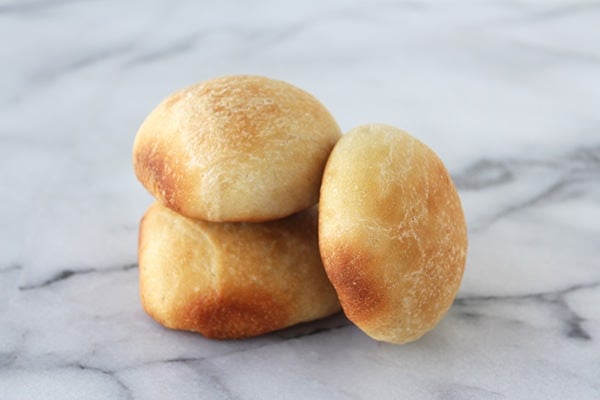
Bread Flour
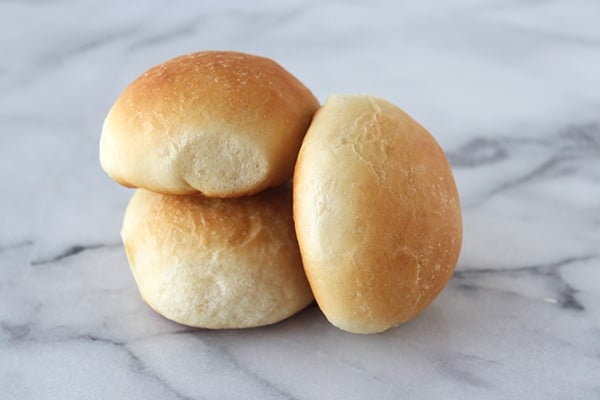
For this basic experimental batch, I substituted all 3 1/2 cups (15.43 ounces) of all-purpose flour in the control recipe with 3 1/2 cups (15.68 ounces) of bread flour, keeping everything else the same. The dough itself turned out smooth and soft and was very easy to work with. This is likely because bread flour is higher in gluten-forming proteins than all-purpose flour, making for ideal dough. The unbaked rolls raised a significant amount to perfect round balls and looked beautifully golden brown when baked. The baked rolls were somewhat soft yet also chewy. They were a favorite out of all the batches of dough baked. I would definitely use bread flour in the future for bread rolls when I want a slight chew and a round and sturdy roll.
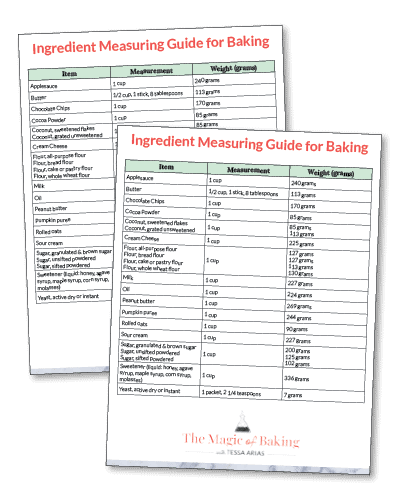
Free Ingredient Measuring Guide!
The key to consistent baking success is a click away. Sign up to get instant access to my printable Ingredient Measuring Guide now!
Eggs
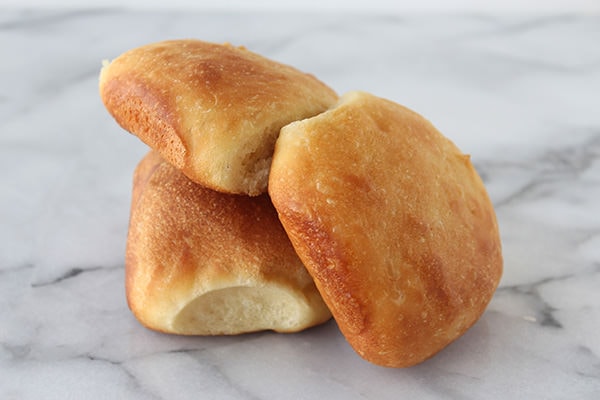
Knowing that eggs can lend flavor, richness, and a soft texture to baked goods, I added 2 whole eggs to the control recipe to see how they would affect the bread rolls. Since the eggs added lots of extra moisture to the dough, I compensated by adding an additional 1/2 cup all-purpose flour, for a total of 4 cups. Even after adding more flour, the dough was still pretty sticky. Once I formed the dough into balls, I was surprised by how much they rose. Like the bread flour batch, this batch rose significantly, which was probably due to the extra protein added by the eggs. In fact, these were the largest rolls in this entire experiment. The rolls themselves were soft, rich, and fluffy with a bit of a crusty bite. They had a light and open crumb but were nice and sturdy. I enjoyed these rolls.
No Fat
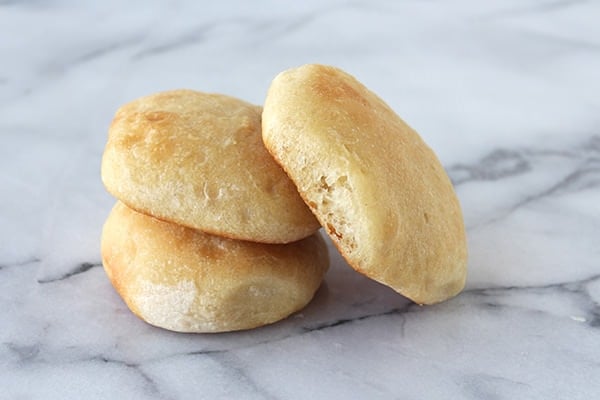
The control recipe calls for fat in the form of 1 cup of milk and 1 tablespoon of butter inside the dough and another tablespoon brushed on the rolls before baking. Since fat is a tenderizer, I wanted to see if I could produce a crusty bread roll by removing the milk and replacing it with additional water, for a total of 1 1/4 cups warm water. I then omitted the butter entirely from this batch. The dough was very wet and sticky, as expected since most crusty bread recipes are on the wet side. This batch of dough raised the least in the times called for in the recipe and the resulting bread rolls were actually quite flat, probably because there wasn’t much protein. These rolls also didn’t brown much while baking which concerned me. I was happily surprised, however, when the baked rolls turned out crusty and chewy with a light, airy interior texture reminiscent of a baguette.
Extra Butter
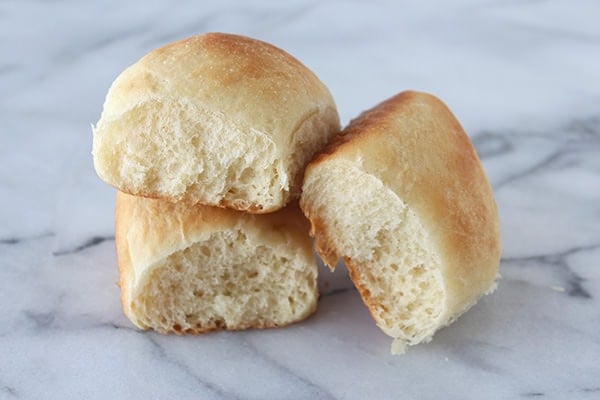
In this test I set out to see if adding more butter would make a big difference on the texture of the rolls. I added 3 tablespoons of butter to this dough, up from the original 1 tablespoon called for in the control recipe. I also maintained the 1 tablespoon of melted butter to brush on the rolls prior to baking, for a grand total of 4 tablespoons of butter in this experiment, double the amount compared to the control recipe. The dough itself was slightly more tacky than the control but the formed dough balls rose nicely. In fact, they rose so much that they each touched each other in the pan when baked. The baked rolls were ultra soft and fluffy. The look and feel of these rolls reminded me of the soft butter dinner rolls you buy at the grocery store bakery. If you enjoy this texture, adding extra butter is an easy way to accomplish that.
Whole Wheat
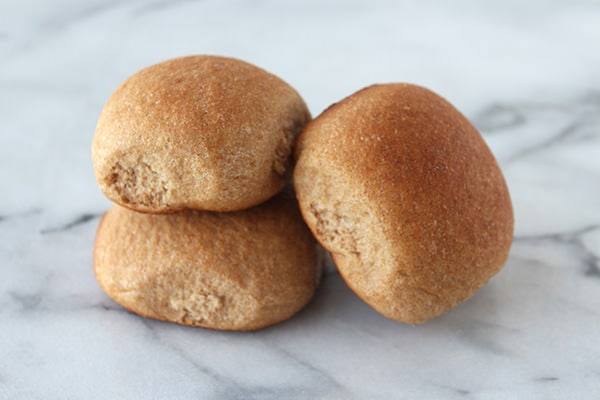
In an effort to make dinner rolls an everyday healthier fare, I set out to see if using 100% whole-wheat flour could still produce tasty rolls. I substituted all 3 1/2 cups (15.43 ounces) all-purpose flour with 3 1/2 cups (14.82 ounces) whole-wheat flour. The dough turned out really firm and not remotely sticky due to the high protein content. The formed rolls stayed nice and round but didn’t rise as much as some of the other batches. The baked rolls formed a nice crusty exterior but the interior was fairly dense and slightly dry, as I feared it would be. If you want to incorporate whole wheat flour into your bread rolls, you may want to start with a 50/50 whole wheat to all-purpose flour ratio to make the rolls lighter and fluffier.
Comparison:
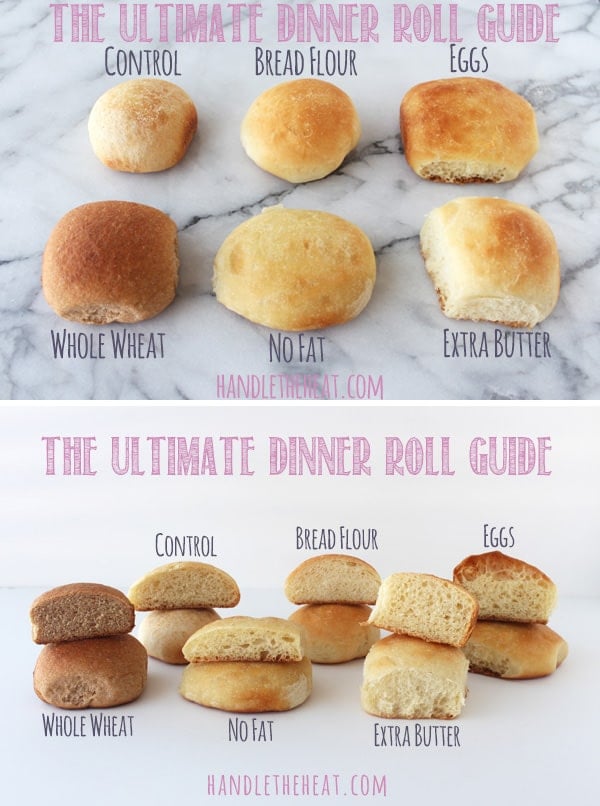
The article The Ultimate Dinner Roll Guide was originally posted at Relish.com.
Check out my Ultimate Dinner Roll recipe created from these experiments!
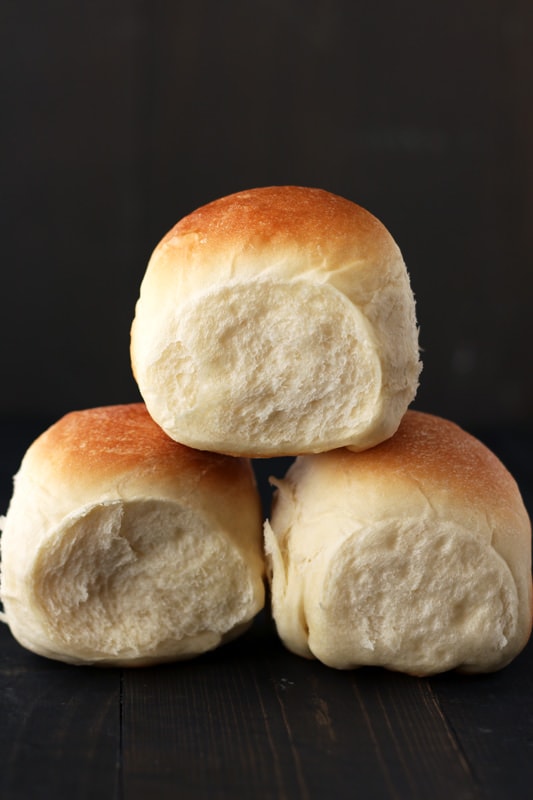
Also be sure to check out these ultimate guide posts:
The Ultimate Guide to Chocolate Chip Cookies
The Ultimate Guide to Chocolate Chip Cookies Part II
The Ultimate Brownie Guide
The Ultimate Cupcake Guide
The Ultimate Pie Crust Guide
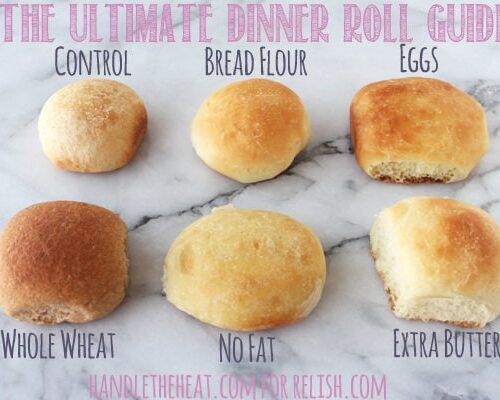
Control Dinner Roll Recipe
Email This Recipe
Enter your email, and we’ll send it to your inbox.
Ingredients
- 1/4 cup lukewarm water
- 1 cup warm milk (100 – 110°F)
- 2 tablespoons unsalted butter, at room temperature, divided
- 2 tablespoons granulated sugar
- 1 1/2 teaspoons fine salt
- 2 1/4 teaspoons (1 packet) instant yeast
- 3 1/2 cups (15.43 ounces) unbleached all purpose flour
Instructions
- Combine the water, milk, 1 tablespoon of the butter, sugar, salt and yeast in the bowl of a stand mixer.
- Add 2 cups of flour and stir with a wooden spoon until the dough forms a rough, shaggy mass. Attach the dough hook to the mixer, turn to low speed, and gradually add the remaining flour, kneading until a mass of dough begins to forms. Continue kneading on medium-high speed for 4 to 5 minutes until a soft, smooth ball of dough is formed. The dough should feel elastic and slightly tacky to the touch.
- Lightly spray a large clean bowl with cooking spray and place the dough in the bowl. Cover the bowl lightly with plastic wrap. Let rise for about 45 minutes to 1 hour at room temperature or until the dough is big, puffy, and about doubled in size.
- Spray a 13×9-inch baking pan with cooking spray. Gently deflate the dough. Use a bench scraper, knife, or pizza wheel to divide the dough into 15 equal pieces. Shape each piece into a ball and place in the prepared pan. Melt the remaining 1 tablespoon of butter. Brush the dough with the melted butter. Lightly cover the dough with plastic wrap and let the rolls rise for 30 minutes, or until about doubled in size.
- Preheat the oven to 375°F.
- Bake the rolls for 15 to 20 minutes, or until golden brown. Serve warm. Store leftovers in a plastic bag for up to 3 days.
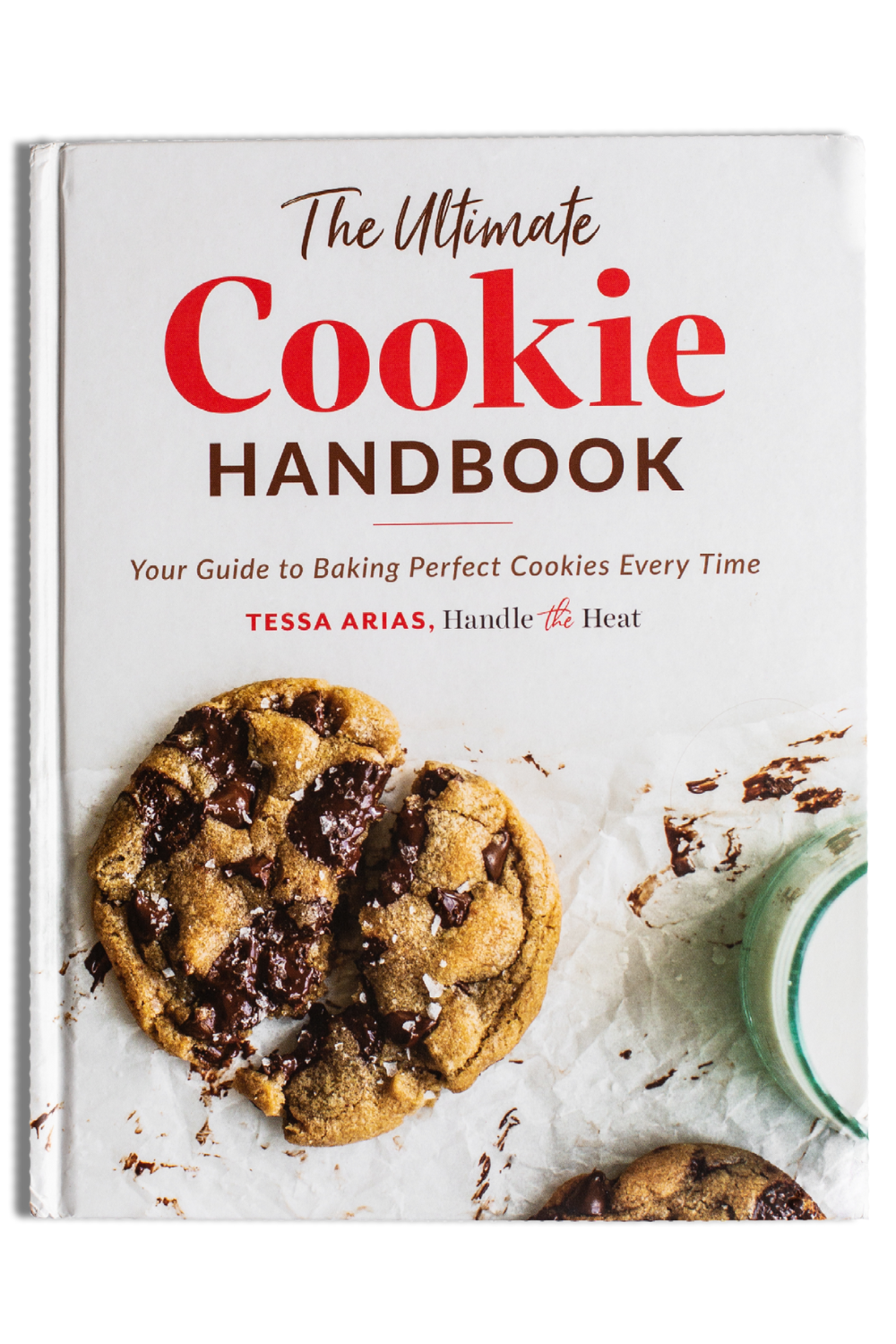
The Ultimate Cookie Handbook
Learn the sweet SCIENCE of cookie baking in a fun, visual way to customize your own recipes frustration-free. Plus, my best 50+ homemade cookies!
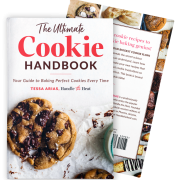
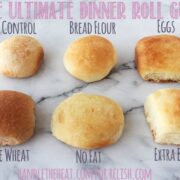
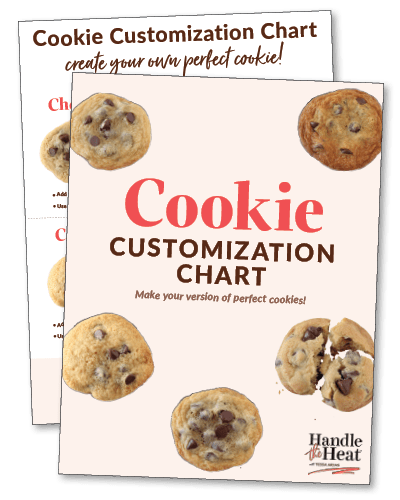
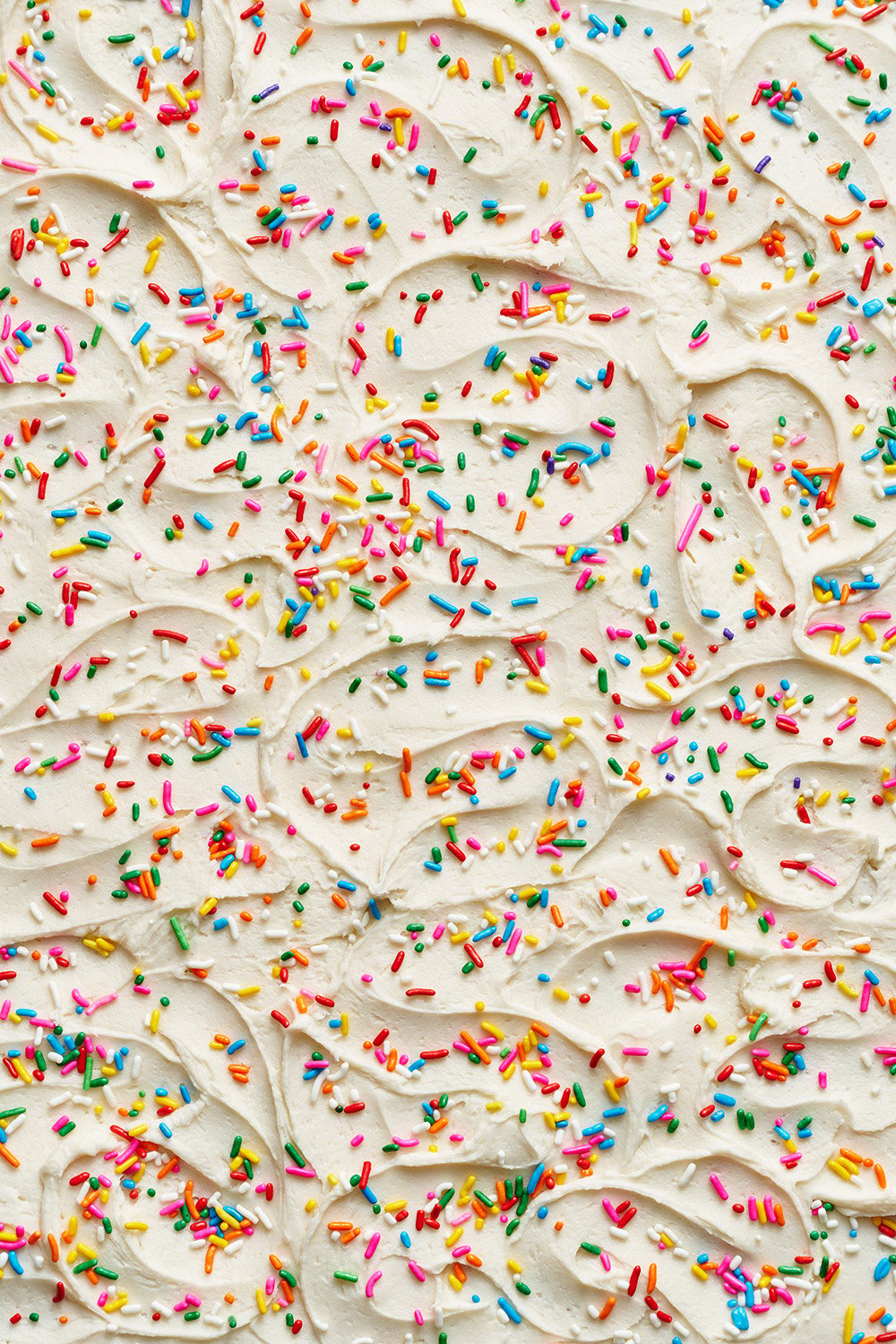
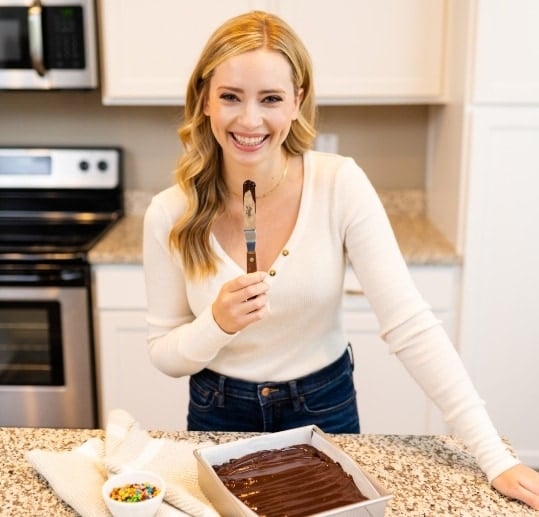


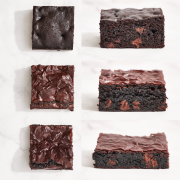
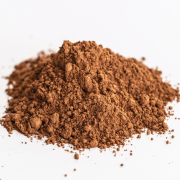
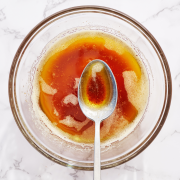


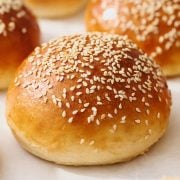
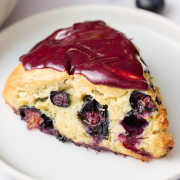








I enjoyed seeing the different variations on a roll recipe.
what if u have do this by hand
You can knead this dough by hand 🙂 Click HERE to see our step-by-step video on how to knead dough perfectly by hand. Please let us know how it goes!
This was very interesting thank you! I am trying to do research to find out if hydration varys per batch of flour, enough to make a noticeable difference when making rolls. Can you help me regarding this? And is there a way to tell if my dough has enough flour or needs more, (which would depend on the hydration of the flour)
Happy to hear it! I can’t help too much more; however, I quickly looked it up online and came across a few different articles that might help you out!
1. https://thebreadmaiden.com/2015/11/17/the-science-behind-hydration-and-bakers-percentages/
2. https://www.jorgencarlsen.com/journal/2016/9/10/whats-your-hydration#:~:text=So%20what%20hydration%20do%20I,start%20feeling%20slack%20at%2070%25
3. https://artisanbreadinfive.com/2008/02/10/qa-flour-and-water/
The recipe says in step 1 to combine the water, milk, etc.. but the recipe doesn’t list water as an ingredient. Is this a typo?
I have tried at least 10 different yeast roll recipes. My family loves rolls and I have honestly tried to make some that we all love but I have failed. Every recipe I try rises to the moon so I am good there. BUT every one has been tasteless and packy more like a cakey texture. Can you help me please? What am I doing wrong? Thanks
In this recipe can I add eggs, if so how many
You say “Combine the water, milk, 1 tablespoon of the butter, sugar, salt and yeast in the bowl of a stand mixer.” but water is not one of the ingredients in the list.